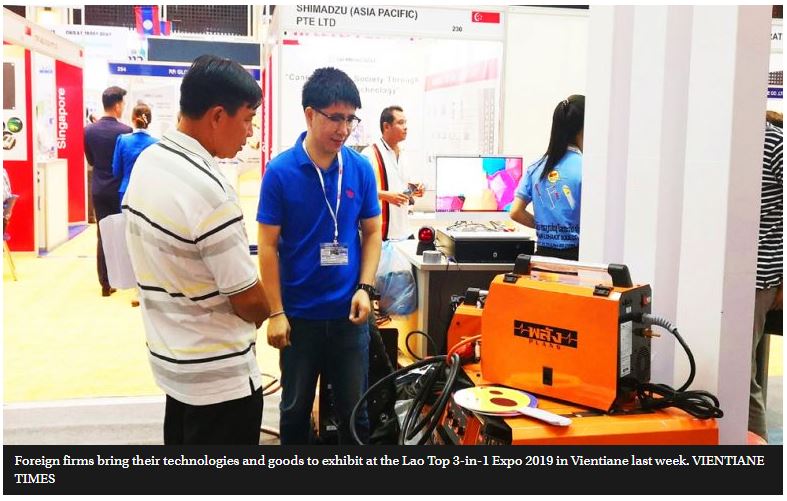Foreign firms eye bigger markets in Laos
Companies from Asia, Asean states and Europe are eyeing markets for their products in Laos, which is witnessing strong demand.
Despite being a small market in the Asean region with a population of 6.8 million, Laos is an attractive destination for manufacturers from China, Japan, South Korea, Singapore, Malaysia, Thailand, Germany and Italy. They are all looking for business opportunities in the country.
The steady growth of the Lao economy is a key factor for industries from these countries considering the expansion of exports to the country.
Prime Minister Thongloun Sisoulith said during the recent National Assembly meeting that economic growth in Laos has been good when compared to some other countries, although it was slower than in previous years.
Over the past four months, regional growth fell marginally from 5.9 per cent last year to 5.7 this year. Growth in developing nations is expected to decrease from 6.4 per cent last year to 6.2 per cent this year.
According to a recent update from the World Bank for East Asia and the Pacific, Laos’ gross domestic product (GDP) is projected to grow by 6.6 per cent this year and 6.7 per cent next year.
The key factor for the fast-track growth of the Lao economy is large infrastructure projects.
Growth in developing countries of East Asia and the Pacific is projected to soften to 6.0 per cent this year and next year, down from 6.3 per cent last year, largely reflecting global headwinds and a continued gradual policy-guided slowdown in China.
These economic factors have attracted the interest of firms from Asia, Asean states and Europe, and they are looking at Laos as an important market.
Last week, foreign firms brought their technologies and goods to exhibit at the Lao Top 3-in-1 Expo 2019 in Vientiane. Products such as concrete bloc machines, solar power systems, construction equipment, electric tools and food items were displayed at the event.
The main target for the firms was building up networks and bases for distribution in Laos by working with local partners.
An executive from a concrete bloc machine manufacturer from China said this was the first time his company had introduced such technologies in Laos. His firm is looking for a local partner to distribute the machines. The company does not only have a production base in China, but it also has a factory in Cambodia.
Giving a chance to foreign companies to expand distribution in Laos is part of the Lao government’s policies for integration and opening up the markets, but some economists have suggested there should be a clear study of gains and losses while implementing such policies.
National Economic Research Institute vice-president Leeber Leebouapao told Vientiane Times on Tuesday that opening up markets for imported goods is necessary to broaden competition. Many countries support free markets instead of protectionism, he said.
In this case, producers in Laos have to develop themselves and be prepared for a tough race with foreign manufacturers, who ship products that can affect the existing market shares of domestic firms.
Leeber said although countries operate a free market policy, they still protect domestic producers and assist them. But the level of protection and how it should be enforced depends on various factors.
The protection mechanism has various methods, but the most important thing is that it has to benefit consumers and the state, including the environment, foreign currency reserves and trade balance management, he said.
Over the past four months of this year, Laos’ imports and exports reached more than $2.5 billion. The imports were worth more than $1.2 billion and the exports more than 1.3 billion, according to a report by the prime minister.
This figures show that the trade balance was quite good and it did not create much of a headache for the Bank of the Lao PDR in managing foreign currency reserves. VIENTIANE TIMES


 English
English




